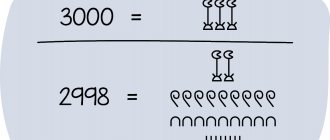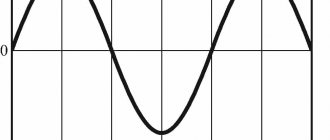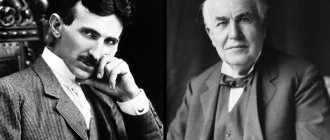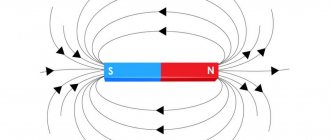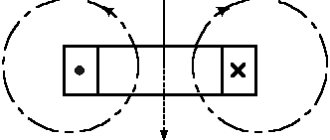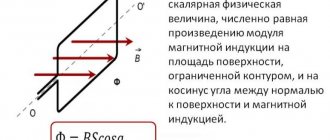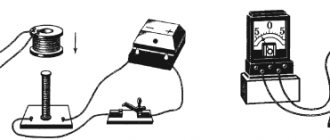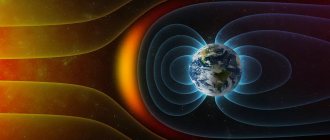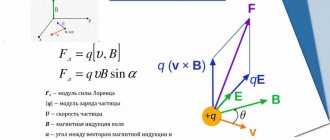Updated July 20, 2021
Hello, dear readers of the KtoNaNovenkogo.ru blog. Understanding the world requires from a person not only an appropriate level of intelligence, but also certain mental efforts.
And the key tools in this matter are induction and deduction - two effective methods, thanks to which any objects or phenomena form the basis of future theories.
And even if we exclude the problems of scientific research, we are left with an ordinary life, during which all we do is make some decisions. Each of them is a whole chain of thoughts and conclusions based on the use of a wide variety of reasoning models.
Let's look at how these models work below.
Induction is...
To make it easier to understand this concept, let’s turn to the linguistic background from dictionaries, since the essence of any term lies in its decoding. The etymology of the word “induction” refers us to the late Latin language, when two conceptual markers were fixed in it:
- based on the noun – inductio (summing, guiding);
- and based on the verb - inducere (establish, entail).
The essence of these markers implies the process of building a logical chain between an action and its consequence.
In other words, by induction we mean a special type of cognitive procedures through which a statement is derived that generalizes some particular facts.
But does this term have the same semantic connotation in other disciplines?
Despite the fact that induction can be considered a universal phenomenon, most often the speaker operates with a more common definition that is directly related to logic.
That is, we usually mean such reasoning in which, based on observations of particular cases, a certain general pattern or theory is gradually deduced.
However, in the semantic spectrum of this concept there are also other interpretations, the meaning of which is determined by the scope of their use. For example, induction:
- in physics , this is the process of the emergence of an electromotive force when the magnetic field surrounding a conductor changes;
- in physiology - this is the mutual stimulation of the processes of inhibition and excitation of the nervous system;
- in medicine , this is a change in the activity and number of enzymes when interacting with chemical compounds;
- in chemistry , it is the acceleration or initiation of a second chemical reaction while the first is occurring.
Since mathematics, economics and law are based on logic, the concept of induction in them refers to the anticipation of results, the establishment of patterns and the derivation of evidence. How close is this version to the truth?
Induction current
Faraday wondered what the reason was - in the movement itself or in the fact that when the magnet moves, the magnetic induction of a uniform field inside the coil changes. Maybe it’s not a matter of movement at all, but a change in the magnetic field? How can I check this? It is necessary to make sure that the field changes, but no movement occurs. To do this, you can increase or decrease the current.
A device for changing the current in a circuit is a rheostat. Let's connect it in series to an electromagnet. The current from the source will first flow through the rheostat, connect the second terminal of the device to the coil, and the second terminal of the latter to the current source. Now you can adjust the current strength. We insert an electromagnet - current flows, the galvanometer needle reacts. Is this due to the movement of the magnet or a change in the electromagnetic field? Let's check. Let's change the current. We will see that when it changes, the same happens with the magnetic field in the coil. As a result, a current appears in the second coil. It's called induction.
Logical dualism
Another way to understand induction is to turn to the classics of world literature. The legendary character and very extraordinary personality Sherlock Holmes used the deductive method, collecting a general picture of the crime from many details and simultaneously sketching a portrait of the offender.
Thanks to deductive reasoning, the detective could figure out the profession of his interlocutor in a matter of moments, relying on such seemingly trifles as the presence of tattoos, scuffs on clothing and demeanor. These were the details common to some social groups.
But inductive judgments made it possible to guess - in particular, by the type of tobacco and the soil on the shoes - which places the suspect most often went to, because this was not observed in other parts of London.
Thus, Holmes operated with both types of reasoning depending on the situation - when some particular characteristics became general and vice versa. And although the conclusions may have turned out to be false, they still helped lead the investigation. This is the basis for the interconnection of logical tools and their unconditional usefulness when working in conjunction.
Empiricism allows you to find some individual facts. Induction helps to build assumptions and logical chains on this basis. Reflections form the basis of generalizations, and then a freshly made hypothesis through deduction becomes the key to solving problems in most particular cases, complementing and/or updating existing practical experience.
And the cycle repeats, replenishing the store of knowledge about the world. Is it then possible to consider knowledge obtained through inductive constructions to be the ultimate truth?
Movement of a wire in a magnetic field
The value of the induced emf is determined depending on the length of the conductor crossed by the field lines. With a larger number of power lines, the magnitude of the induced emf increases. As the magnetic field and induction increase, a greater value of EMF occurs in the conductor. Thus, the value of the induced emf in a conductor moving in a magnetic field is directly dependent on the induction of the magnetic field, the length of the conductor and the speed of its movement.
This dependence is reflected in the formula E = Blv, where E is the induced emf; B is the value of magnetic induction; I is the length of the conductor; v is the speed of its movement.
Note that in a conductor that moves in a magnetic field, induced emf appears only when it crosses the magnetic field lines. If the conductor moves along the lines of force, then no emf is induced. For this reason, the formula applies only in cases where the movement of the conductor is directed perpendicular to the lines of force.
Good old fly in the ointment
The highest quality assessment can be given by complete induction , which studies all available objects and phenomena.
She describes every property without missing a single detail, making the conclusions essentially like banal enumerations. It is extremely difficult to challenge them - to do this you will have to prove forgery or an error in the description.
However, today incomplete induction , since in the world of Big Data it is physically impossible to embrace all layers of knowledge.
Therefore, a control group is identified, observations of which form the basis of the theory. In this case, incomplete induction can be :
- popular;
- scientific.
The first simply tries to identify similar characteristics in the objects of study. The more coincidences, the more reliable the theory, although the first discrepancy will completely negate previous efforts.
Unlike popular induction, scientific induction , in which conclusions can be built thanks to three formats:
- Through case selection - when all the features of the set being studied (that is, each of the elements) are taken into account. Then any discrepancy with the hypothesis allows us to assign the object to another class and keep the basic theory unrejected. Otherwise, a new concept is derived.
- Through the study of causal relationships - when a specific set of circumstances that occurred before the observed phenomenon is studied. Simply put, the study of causes pays attention to the conditions that precede the phenomenon in question. This is the basis of experimental study. Specifying the circumstances not only makes the hypothesis more resistant to any criticism, but also clarifies the empirical experience.
- Through the study of a single object , which is the only representative of a certain group. In these cases, excluding the individual characteristics of the object of study, it is also possible to come to general conclusions. The risk of error remains, but with a limited number of samples there is no choice.
As you can see, knowledge obtained within the framework of inductive mechanisms is, as a rule, quite problematic, since it is only probabilistic. This factor causes the occurrence of numerous errors as a natural consequence of incomplete generalizations.
In light of this, most inductive judgments require repeated testing in practice, when the knowledge thus obtained is compared with the experience of the consequences arising as a result of inductive generalization.
induced emf
Let us understand in detail what the concept of induced emf is. When a conductor is placed in a magnetic field and moves with the intersection of field lines, an electromotive force called induced emf appears in the conductor. It also occurs if the conductor remains stationary, and the magnetic field moves and intersects the conductor with lines of force.
When the conductor where the EMF occurs is closed to the external circuit, due to the presence of this EMF, an induced current begins to flow through the circuit. Electromagnetic induction involves the phenomenon of inducing an EMF in a conductor at the moment it is crossed by magnetic field lines.
Electromagnetic induction is the reverse process of transforming mechanical energy into electric current. This concept and its laws are widely used in electrical engineering; most electric machines are based on this phenomenon.
Simple summary and practical benefits
It is impossible to know the world entirely. Due to generalizations, they quickly solve a specific problem and move on to studying more complex things.
With each practical confirmation, the reliability of inductive inference increases, but the process of substantiating knowledge becomes possible only with the use of deductive mechanisms : from generalizations to particulars.
A striking example is the creation and gradual introduction of a vaccine against coronavirus, when, due to the similarity of viruses, doctors were able to speed up the development of a remedy to counter the new threat.
Logical mechanisms may not be visible in everyday life, but it is on them that civilization rests. Good luck to you! See you soon on the blog pages KtoNaNovenkogo.ru
Rotating reel
The operation of an electric current generator is based on the rotation of a coil in a magnetic flux, where there is a certain number of turns. EMF is induced in an electric circuit whenever a magnetic flux crosses it, based on the magnetic flux formula Ф = B x S x cos α (magnetic induction multiplied by the surface area through which the magnetic flux passes and the cosine of the angle formed by the direction vector and perpendicular to the plane lines).
According to the formula, F is affected by changes in situations:
- when the magnetic flux changes, the direction vector changes;
- the area enclosed in the contour changes;
- the angle changes.
It is allowed to induce an EMF with a stationary magnet or a constant current, but simply by rotating the coil around its axis within the magnetic field. In this case, the magnetic flux changes when the angle value changes. During rotation, the coil crosses the magnetic flux lines, resulting in an emf. With uniform rotation, a periodic change in the magnetic flux occurs. Also, the number of field lines that intersect every second becomes equal to the values at equal time intervals.
In practice, in alternating current generators, the coil remains stationary, and the electromagnet rotates around it.
